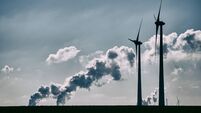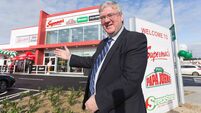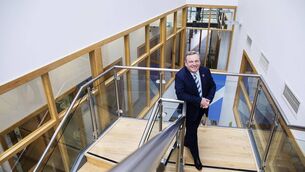Flogas on a path to replace natural gas with biogas, and LPG with BioLPG

Allan Shine, CEO of Kildare Innovation Campus, and John Rooney, MD of Flogas Ireland.
Energy bills. They’re costly and getting costlier. They generate conversations, letters to editors, ire. Short of being privy to a third eye – one that sees clearly ahead – it’s difficult to predict when that might change. For most of us. But not for John Rooney.
As managing director at Flogas, he’s an up-to-speed, core player in that field, and perspicaciously conversant with that.
In our conversation, we get to the topic of costs. But not before we talk letters. Letters in the form of DCC, LNG, RESS, PPA and more. Many more. So many, in fact, that in recalling them I’m reminded of old schooldays, and the reciting of Shakespearean and Petrarchan sonnets and the rhyme schemes on which they were so exquisitely framed.
When Rooney came on board as MD, eleven years ago, he was hired by DCC plc. “Back in 2014, we were primarily an LPG business, but we also had a modest share of the national gas market. Back then, DCC, being very ambitious in terms of acquisition and organic growth, was looking to Flogas to lead their charge into new energy products and services in Ireland.
This was done: “Over the last ten years, we built up our commercial natural gas market share, says Rooney. “It’s over 30% now.” As for their share of the commercial electricity market, he says the 2021 acquisition of Naturgy Ireland played an important role. “Combined, we probably have a very significant share – about 12% – of the commercial electricity market today.”
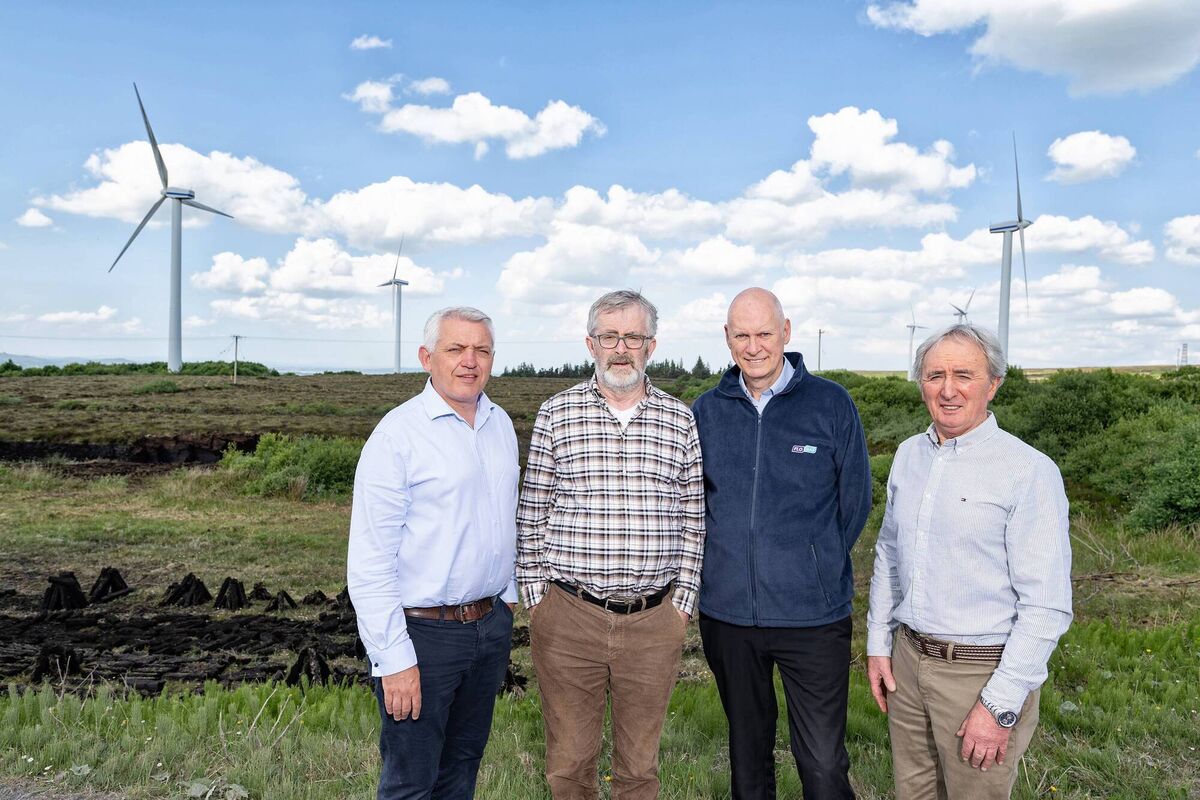
Touching on “the value of DCC’s capital, strength and strong balance sheet” he says: “When we go to get funding to build or expand a windfarm, a medium or long-term power purchase agreement (PPA) in place, one that’s backed by DCC, is a really strong support. This is something we have leveraged really well in the last four years or so, since Flogas Energy acquired Naturgy (Ireland), now rebranded as Flogas Enterprise Solutions.” Describing the growth Flogas has seen in the PPA market, as “massive”.
Rooney continues: “Over the past four or five years, we have been finding, particularly among our larger, industrial and commercial customers, that rather than relying on guarantees of origin – which were the old certs that could be bought on the open market – that what’s wanted is a more indigenous form of electricity supply, as in one that might be connected to a local solar farm.
“This has brought in more than 45 large clients, on corporate PPAs (CPPAs), which are direct agreements between a particular wind or solar farm and a large industrial or commercial user.”
Besides the CPPAs, Rooney says they also have “a whole clatter” of PPAs. “We distribute the energy generated from those PPAs among multiple clients who are interested in participating, and in the process, create a shared PPA structure, one that is effectively a multi-user PPA. We also buy PPAs ourselves - for our own use. We buy electricity everyday. This provides us, and some of our clients, with greater price stability.”
At a price?
“Indeed. It is slightly more expensive because it comes from 100% renewable energy sources. However, it enables us to confidently communicate the value of price stability to our clients, in contrast to the volatility seen in recent years – especially with natural gas prices driving up the cost of electricity.”
Perhaps unsurprisingly, given that DCC recruited him and that he reports to a DCC regional manager, Rooney circles back to the topic of the plc at regular intervals as we chat.
He has only good things to say: “There’s quite a flat structure within DCC,” he says. “Group CEO, Donal Murphy, visits our office three or four times a year. He knows our business very well.”
Of the plc, he says: “They are currently rationalising their portfolio. Having exited healthcare they are in the process of exiting technology. This is with a view to becoming a pure energy player, with DCC Energy operating in 12 to 14 markets around the world.” DCC has big ambitions, he says: Double profits by 2030 while at the same time reducing customer emissions by 50%.
“The renewable alternatives might include renewable electricity or biomethane for gas, or bioCNG for transport,” he explains. “We are doing this here in Ireland. But DCC is doing this right across Europe and in America as well.”
On the topic of Ireland’s renewable energy transition, Rooney says that for an island nation, with the potential for offshore wind energy that brings, we have been very slow to get to where we are. That said, he concedes "we’ve done pretty well” on the onshore front – up to now. He pauses before uttering the last three words, and you have to hand it to him; the pause for effect delivers as promised.
“In a typical year here, wind generates about 35% of our total electricity,” he says. “While we have phased out coal power, we still need gas and we will continue to do so – for backup reasons – for generations to come.”
Perhaps to take the sting out of that, he continues: “If we can replace natural gas with biogas, and LPG with BioLPG over the next few years, this will help with the generation of electricity from renewable sources.”
Ireland’s planning system was discussed, with Rooney remarking: “People from the opposite coast can still raise objections to offshore wind projects, and that’s just one of many hurdles. These projects which are often international, typically involve substantial capital investment, and take many years to develop. On top of that, they depend on Renewable Electricity Support Scheme (RESS) auctions, which sometimes take four or five years to begin.
“Trying to forecast future electricity prices – what offtakers, as well as commercial and industrial users, will be willing to pay in five, ten, or even fifteen years – adds a significant layer of uncertainty,” he says. “Locking those projections into long-term agreements carries a considerable degree of risk.
“Other sources of uncertainty, such as infrastructure challenges, only add to that overall sense of risk. These are the factors that are holding things back at the moment.”
Confident that offshore wind is coming, he says there’s political will and enough support and interest from corporate Ireland and from citizens to get it over the line. “Now, it’s really about trying to sort out the infrastructure and the planning issues. Meanwhile,” he says fervently and sincerely, “I just hope everybody will bear with us.
“We have said to our clients and to the government: “Flogas Ireland wants to be right in the middle of this. And we will be there. Bidding at RESS auctions. And offering long-term hire-purchase agreements, either for our own broader customer base or indeed for direct corporate use. So yes, I am confident. But progress needs to be faster.”
In 2020, the then government put forward an agenda to retrofit over 500,000 homes to a Building Energy Rating (BER) of B2 or higher by 2030. The 2025 Programme for Government reaffirmed and expanded on that.
Of the retrofitting goal, Rooney says: “It’s not going to happen. It’s too expensive. Gas will play a role and it might be that rather than using natural gas coming in from the UK on the Moffat line, or from Corrib, we can change to biomethane.”
Describing the biomethane plants, he helpfully explains: “We are not building the biomethane plants – they are anaerobic digestion plants which will produce biomethane to get injected into the grid. But we are offering large gas purchase agreements on behalf of our clients, many of whom want to decarbonise their gas usage because they recognise that they will be needing gas for the next five to ten years.
September was a busy month for deal signing for Flogas. In that month, it signed a three-year corporate power purchase agreement (CPPA) with Kildare Innovation Campus (KIC), home to Europe’s DeepTech Valley. The CPPA will supply the campus with renewable electricity from the Cuillalea Wind Farm in County Mayo, reducing its carbon emissions by an estimated 2,000 tonnes of CO2 annually. “We are proud to partner with KIC and Cuillalea Wind Farm on this groundbreaking CPPA," said Rooney.
Alluding to the fact that the future is renewable energy, that this has been well established for the past ten years or so and it’s just cranking up now, Rooney says: “We now have a National Biomethane Strategy in place. A Renewable Heat Obligation (RHO) scheme has been announced, and will come into effect next year. Plus,” he says proudly, “we now have the biomethane gas purchase agreement that was recently announced between that very large player, Nephin Energy, which is owned by the Canadian Pensions Board, and ourselves, owned by DCC. This is the next generation of decarbonisation.”
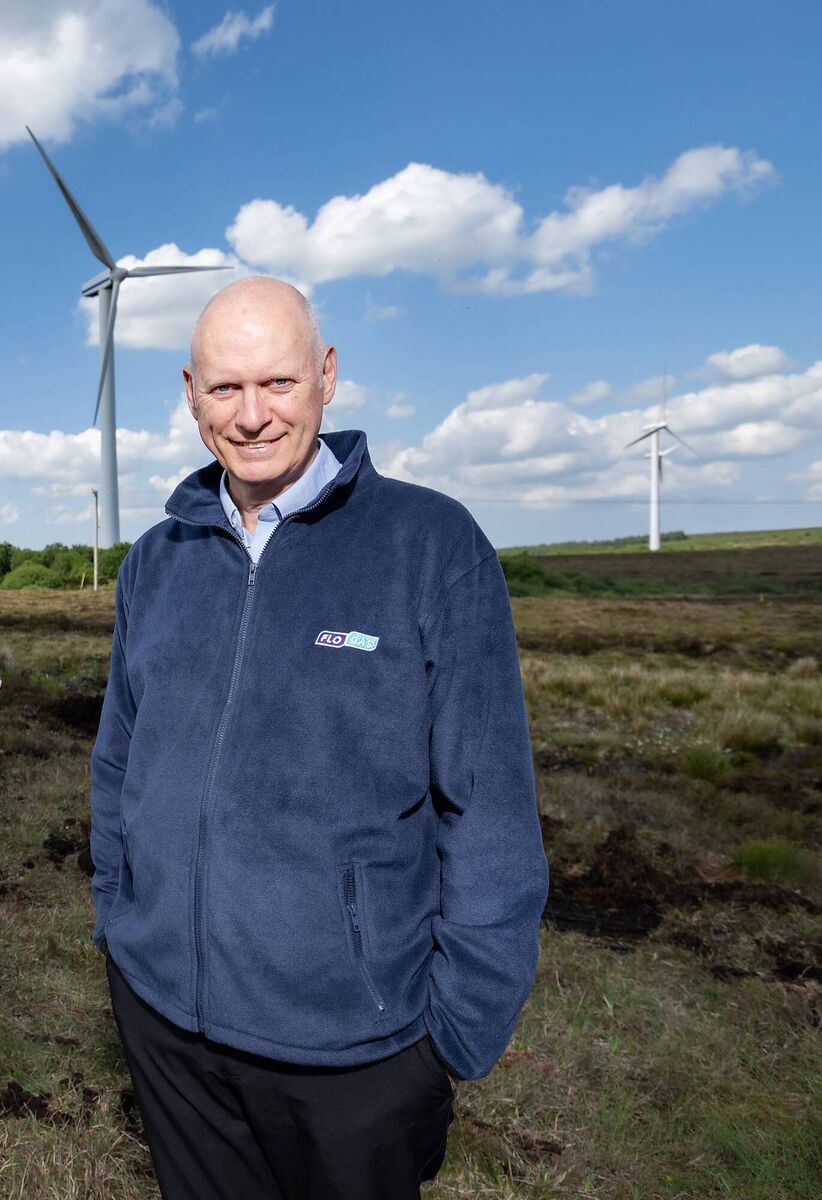
It is. And change is coming. As is winter, and its impact on energy use at home and the resultant bills.
As talk time is growing short, Rooney elucidates on the theme of energy costs with lightning speed: The wholesale cost of energy being driven by gas prices, which are, in turn, being driven up by Europe's reliance on Russian gas and on disturbances in the region.
That said, he moves on network charges, which he describes as “the balancing side” of the equation: “When announcing price increases, network charges are typically cited," he says. “Charges are increasing because of investment in renewable infrastructure. While network charges probably will increase going forward, we can hope that the wholesale costs reduce at a faster rate. That way, the net effect will be a reduction in overall price to consumers. But it’s going to be slow, and it is dependent on other, geopolitical factors.”




